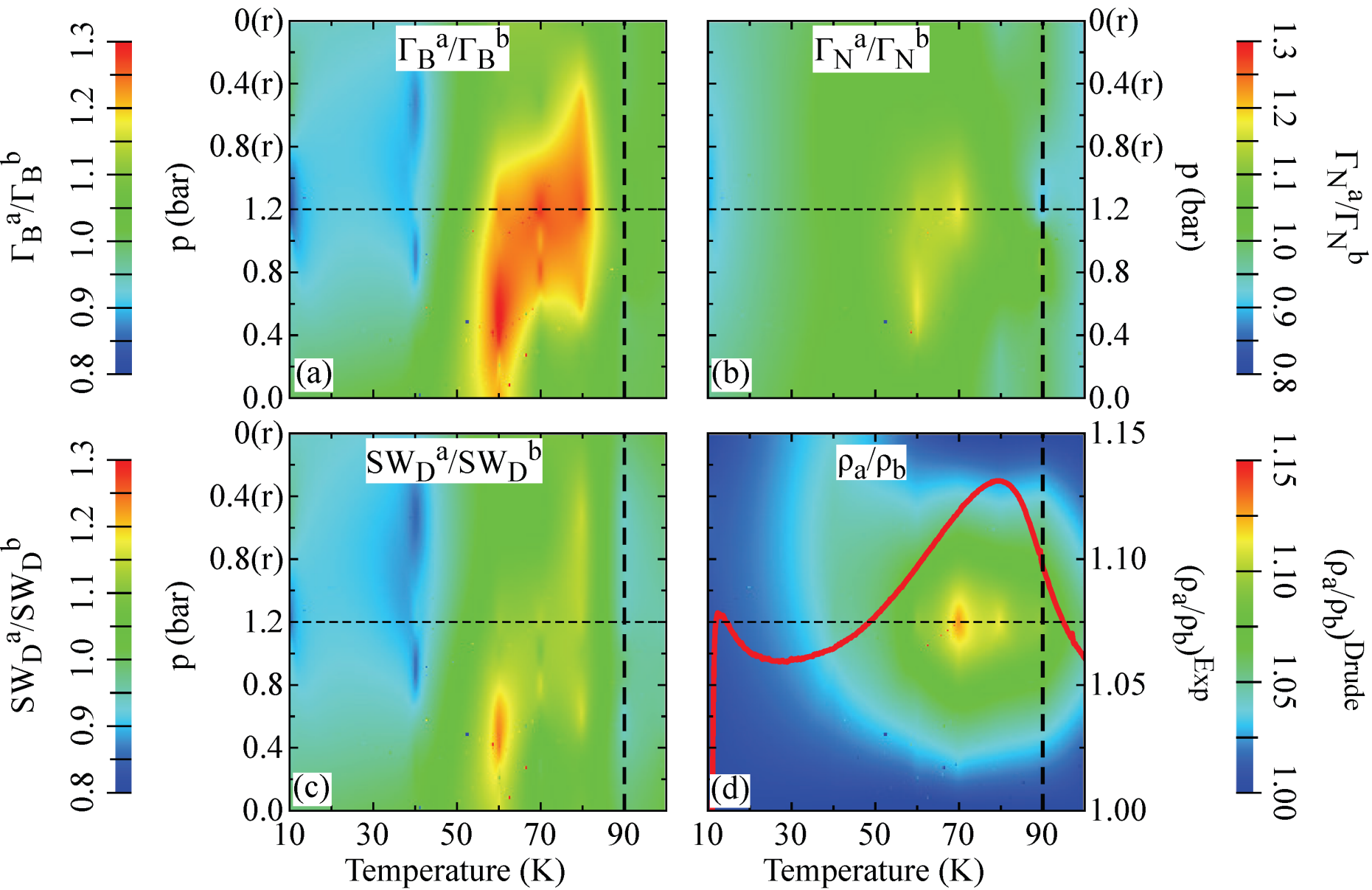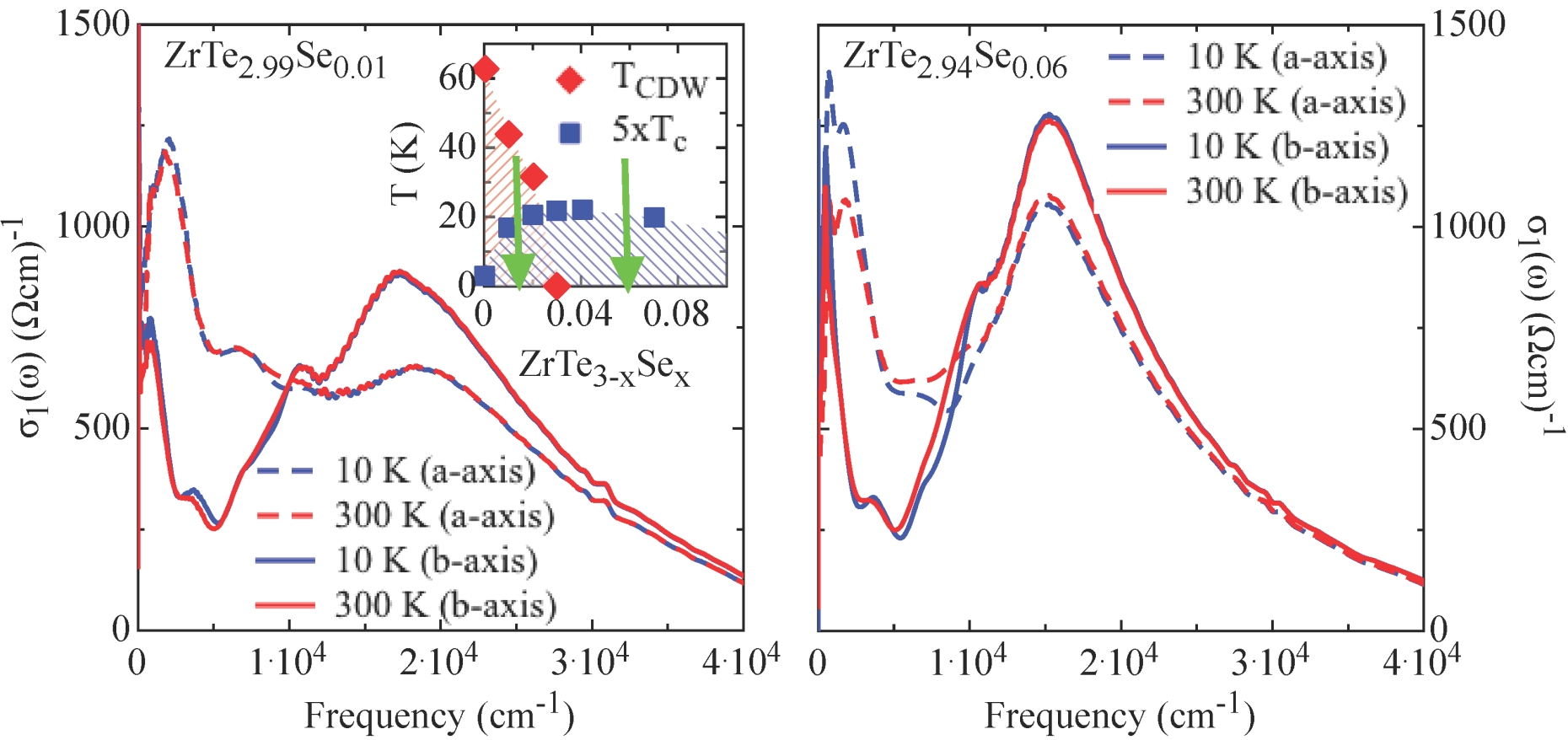Highlights 2018
Ingredients for the electronic nematic phase in FeSe revealed by its anisotropic optical response
We have evinced, within one single experiment, all relevant ingredients determining the anisotropy in the charge dynamics as well as in the dc transport properties of FeSe, a prominent iron-based superconductor. The scattering by spin fluctuations turns out to be the most decisive effect with respect to the anisotropic nematic properties. FeSe lately acquired a prominent role within the panorama of superconducting materials, since it harbors a tetragonal-to-orthorhombic structural phase transition at Ts=90 K, where the lattice breaks a discrete rotational symmetry, in the absence of any subsequent, ambient pressure long-range magnetic order, prior the onset of superconductivity at 8 K. This is associated to an electronic nematic phase, the relevance of which in shaping the phase diagram of high-temperature superconductors is certainly one of the most debated issues nowadays. This work describes novel results of reflectivity measurements from the far-infrared up to the ultraviolet that probe the optical response as a function of the tunable symmetry breaking field (stress) at any T ≷ Ts. The data provide evidence that the low-energy excitation spectrum in the nematic phase is shaped by an important interplay of the anisotropic spectral (Drude) weight and scattering rate. In the zero-frequency limit though, the charge scattering rather than the Fermi surface parameters seems to determine the nematic anisotropy. In a broader context, these findings may support theoretical proposals advocating a close connection between spin fluctuations, nematicity (i.e., orbital order) and superconductivity.
Related paper
Impact of the charge-density-wave state in the electrodynamic response of ZrTe3-xSex: optical evidence for a pseudogap phase
The emergence of superconductivity upon progressively suppressing the long-range, charge-density-wave (CDW) order characterises the phase diagram of several materials of interest in the on-going solid-state physics research. Se-doped ZrTe3 compounds provide the most recent, suitable arena in order to investigate the interplay of otherwise competing orders in layered-like two-dimensional systems. We present an optical study of the CDW state in ZrTe3-xSex at selected Se-doping, based on the measurement of the reflectivity from the far-infrared up to the ultraviolet, as a function of temperature. We particularly focus our attention to the redistribution of the spectral weight, which images the impact of the CDW state within the optical conductivity across the phase diagram of the title compounds. The electrodynamic response is consistent with a scenario based on a long-range CDW condensate at low Se-doping. Upon increasing the Se content, this then gives way to local, short range order CDW segments. Our spectral weight analysis reveals the presence of a pseudogap phase, as fingerprint of the CDW precursor effects and thus shaping the charge dynamics of the title compounds in their normal state, preceding the onset of superconductivity.


